How to treat lumbar protrusion and leg numbness due to herniated disc and pain and numbness on one side of the leg?
Hello, Dr. Gao Zhi, Sports Orthopedics! Please follow me, "Dr. Zhi Gao, Sports Orthopedics"! Dr. Gao specializes in minimally invasive treatment of knee injuries, sports trauma and arthroscopic techniques.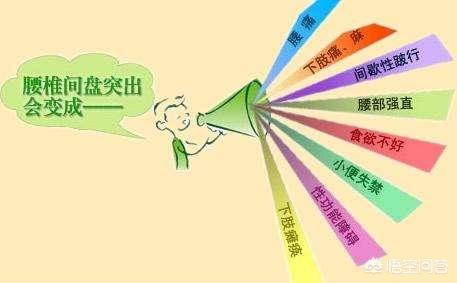
Leg numbness caused by lumbar disc herniation is due to the nucleus pulposus, which is fluid in the center of the lumbar vertebrae, surging outward from the cleft in the annulus fibrosus that surrounds it, forming a bulge that compresses the muscles and nerves of the lumbar vertebrae, causing pain and numbness in the lower back and legs. If left untreated, it can lead to numbness in the lower limbs, loss of muscle strength, impaired mobility, and even incontinence.
Treatment options for leg numbness due to herniated disc?
1. Bed rest
Lumbar disc acute attack is recommended to lie flat to rest, if the relief or work is busy, you can often change the posture, it is best not to sit for a long time, driving and computer typing posture is the most injurious to the waist, it is best to get up and move around in 20-30 minutes. In addition, to do less bending movements, not to mention bending to lift heavy objects; do not do heavy physical activity and strenuous exercise.
2. Drug treatment
Lumbar disc herniation does not have any special effect drugs in the clinic, and the drugs should be used reasonably according to the patient's symptoms, signs and examination images. Mainly: non-steroidal anti-inflammatory drugs, dehydrating agents, drugs to improve circulation. Such as cilostro, vitamin B12, vivaxan, etc..
3. Physical therapy
It can be done through massage, tuina, plaster and other therapies. Massage and tuina use techniques such as back rubbing, moving and pressing, pressing and pulling, leg lifting, etc., so as to ease the spastic muscles, reduce scoliosis, and promote the herniated portion of the intervertebral discs to be returned to the body, thus relieving the pain and easing the compression of the nerve roots, and eliminating the symptoms.
4. Traction therapy
It is mainly treated by maxillo-occipital band traction method, traction bed, pelvic traction, electro-mechanical traction and so on. It can make the muscles relax, increase the width of the intervertebral space, reduce the internal pressure of the intervertebral disc, the herniated part of the intervertebral disc is retracted, and reduce the irritation and compression on the nerve root, which needs to be carried out under the guidance of professional doctors.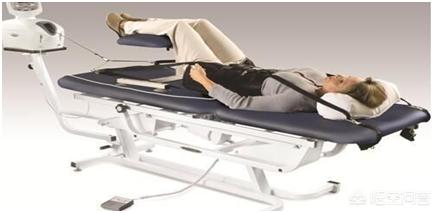
5. Surgical treatment
Patients with herniated lumbar discs will be considered for surgical treatment only if the herniated disc is so severe that surgery is necessary, after 3 months or more of ineffective regular conservative treatment before surgery is performed.
Herniated disc precautions?
1, to protect the waist, do not let the waist by the impact, do not do violent twisting, turning, bending movements.
2. Sleeping on a hardboard bed. Sleeping on a hardboard bed can reduce the pressure on the intervertebral discs.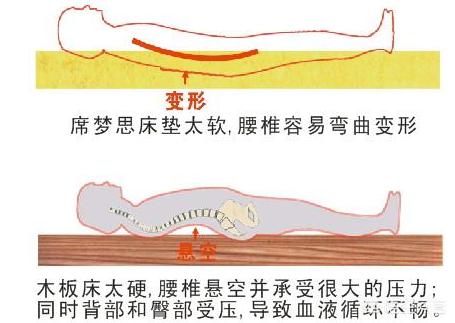
3, pay attention to waist warmth, try not to be cold, you can wear special waist, back protector, etc., do not stay in the air conditioning wind too long.
4, pay attention to rest, do not overwork, should be a combination of work and rest, you can often self-massage waist to relax the muscles, enhance the lumbar force.
5, do not keep a position for a long time: sit, stand for a period of time to relax, adjust posture. Long-term fixed posture, easily lead to lumbar spine force is too large, triggering lumbar disc herniation.
Dr. Gao Zhi of Sports Orthopaedics reminds you that leg numbness and foot numbness caused by a herniated lumbar disc compressing the peripheral nerves cannot be cured by simple self-treatment, and it is recommended to go to a specialized hospital if you often feel numbness in your legs and feet.
I hope the above answer can help you! Dr. Gao Zhi, M.D., specializes in minimally invasive treatment of knee injuries, sports injuries and arthroscopic techniques.
Dr. Liu talks about bones and tendons 🎁What to do about lumbar pain and leg numbness caused by lumbar disc herniation 🎁
The main symptom of lumbar disc herniation is back pain and leg numbness. The presence of pain and numbness in the legs indicates that the nerve roots have been compressed. There are many such patients in orthopedic clinics, and the symptoms are very typical. In severe cases, they feel that their legs have no strength, walk with a limp, and even can't walk long distances. Most of the time, the problem is on one side of the leg, and it is very unlikely that both sides of the leg are affected at the same time. How to treat such symptoms? The following will give you a brief explanation.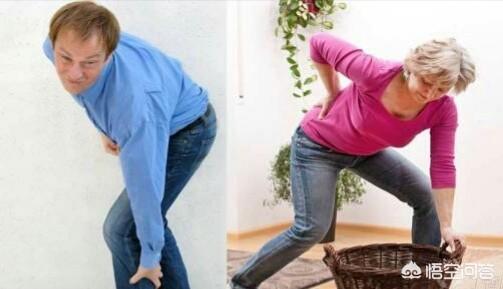
herniated lumbar disk
Lumbar disc herniation is a series of symptoms and signs caused by degenerative changes in the lumbar intervertebral discs, rupture of the annulus fibrosus, protrusion of the nucleus pulposus and endplate cartilage, and irritation or compression of the sinus nerve, nerve root and cauda equina. It is the main cause of low back pain.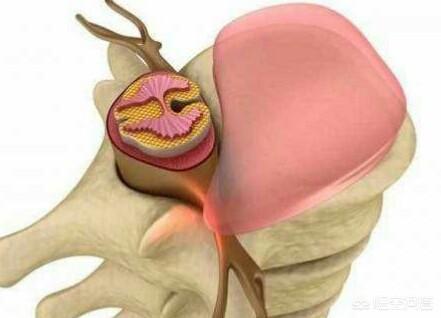
Why do you experience leg pain and numbness?
As long as the symptoms of leg pain and numbness are present, it means that the herniated disc is compressing the nerve root, leading to edema of the nerve root and aseptic inflammation.1. The location of the pain is consistent with the area of innervation of the compressed nerve.2. The pain is a tingling, burning, or cutting pain, which is often accompanied by numbness and distension.3. The pain radiates along the buttocks, the back of the thighs, the lower legs, or the feet.4. The pain can be aggravated by increased abdominal pressure. The second is from the anterior thigh or anterior medial calf.4. Symptoms may be aggravated by increased abdominal pressure. Such as sneezing, coughing, defecation, etc. 5. There is a clear relationship between pain and activity and position. It is aggravated by activity or exertion and relieved by lying down. It is reduced in the morning and aggravated in the afternoon. 6. Walking with a limp. The leg feels weak and painful. Severe intermittent broken walking, that is, walking for a period of time and then resting because of lack of strength, after a while can walk again.7. The classic examination is straight leg raising test and strengthening test, femoral nerve pulling test.
Treatment
Treating leg pain and numbness caused by a herniated disc in the lumbar spine is the same as treating a herniated disc.
1. Bed rest. Many patients will experience a significant reduction in symptoms within 3 days of bed rest. Staying in bed reduces the pressure on the disc and decreases its herniation. One point of attention, the bed should be suitable.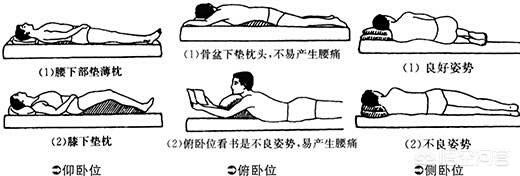
2. Traction therapy. Traction lumbar spine, reduce the pressure on the intervertebral disc, assist in partial reset. To the regular place traction, really can not hang the bar.
3. Wear a lumbar protector with acupuncture, massage, baking lamp, cupping and other treatments.
4. Oral non-steroidal anti-inflammatory and analgesic drugs reduce nerve root edema and inflammation. Drugs to activate blood circulation and remove blood stasis. Infusion of dehydration drugs and hormones if necessary.
5. Epidural or sacral tube injection of hormones, anesthetics, nutritive nerve drugs. But pay attention to sterilization, don't get infected.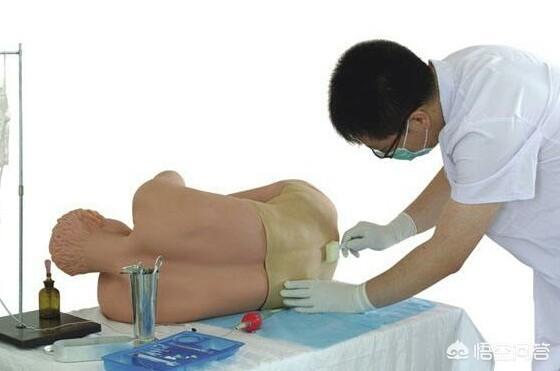
6. Surgery. Specific surgical methods can be used depending on the suitability of your condition.
The best treatment is to prevent it from happening, so usually pay attention to protect the lumbar spine, correct posture, proper exercise of the lumbar muscles, do not move too heavy objects, etc. I hope these can bring you help.
You can follow me or comment below to learn more about medicine.
Follow 🌅Dr. Liu on Bones and Tendons🌅Enjoy a Healthy Life!
The kidneys are responsible for bone marrow production, the spinal cord for blood production, and the liver for storing blood and nourishing tendons.
Lumbar disc herniation, which occurs at the age of about 40, is mainly caused by the lack of kidney qi and the different muscle tone between the two sides, so we need to replenish qi and blood from the root due to the balance of muscle tone through exercise.
Traditional Chinese medicine says that if you pass through, you will not have pain, and if you pass through, you will not have pain. The pain triggered by the body is caused by the lack of access to the meridians and the lack of qi and blood, which is blocked. Therefore, in order to improve the pain caused by the herniated lumbar discs that are pressing on the nerves, you have to open up the meridians and clear up the stasis and blockage, tonify the kidneys, and supplement qi and blood.
Recommendation.
1. Take some Golden Chicken and Tiger Bone Pills with Natto to clear blood (tonifying the kidney and clearing stagnation).
2. Unclogging the bile meridian and unclogging the meridians by dialing the tendons!
3. Point and click to stimulate the ring jump point, until the soles of the feet have the feeling of electricity can be, twice a day is appropriate.
4. Exercise the muscles of the lower back through targeted exercises, shaking the kidneys and rocking the kidneys.
Stick to the above program and you will see noticeable results in a week.
I hope this helps. Thank you.
Why do herniated discs cause leg pain and numbness?
This problem many friends with lumbar disc herniation is not very understanding, since the lumbar disc problem, it should be lumbar pain ah! In fact, not, lumbar pain is just a symptom of lumbar disc herniation, the vast majority of patients are often accompanied by one side of the lower extremities radiating pain, numbness, cold and other abnormal sensations.
Herniated lumbar disc produces leg pain and numbness because the protruding lumbar intervertebral disc compresses the nerve roots in the lumbar spinal canal, and the main role of these nerve roots is to control the movement, sensation and tendon reflexes of the lower limbs, so once the nerve roots are compressed, the sensory conduction of the legs is blocked, resulting in the formation of abnormal sensations, which are manifested as pain, numbness, or coldness, and also accompanied with the weakening of the leg and foot muscles, and the decrease in the Achilles heel and knee tendon reflexes, and so on. The symptoms may include pain, numbness, or coldness.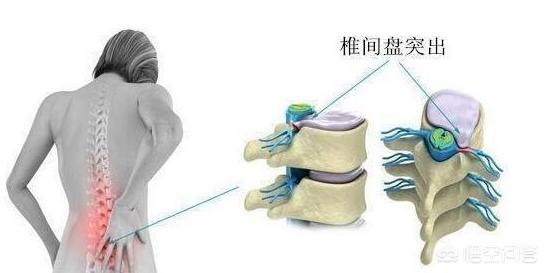
What should I do if I have a herniated disk in my lower back causing pain and numbness in my legs?
Lower extremity pain, numbness and other sensory abnormalities caused by herniated discs are very common, although both are lower extremity skin sensory disorders, pain is more likely to be more painful than numbness, more fortunate is that the symptoms of pain are more likely to subside more quickly than the numbness, the following is a description of the treatment of a number of common methods: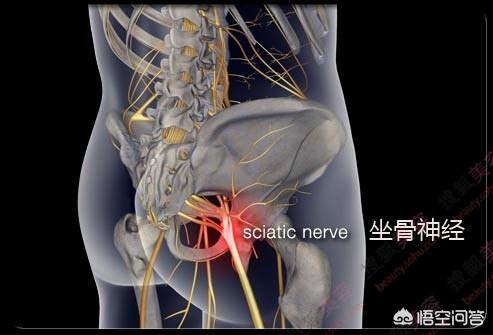
1. Strict bed rest
The most standard bed rest treatment is to lie in bed during the "eating, drinking, pooping, and spreading" are completed in bed, not only the flat position, side, prone and other positions can be, to seek the most comfortable position can be, the requirements of the "flat bed", the majority of patients in the operation of the reality of the Patients can not adhere to, so the broad sense of strict bed rest is as far as possible bed rest can be, this treatment is one of the most basic treatment methods, other methods can not be replaced. Generally speaking, bed rest for about 1 week, the lower limb pain symptoms will be significantly relieved or disappear, numbness is not ideal.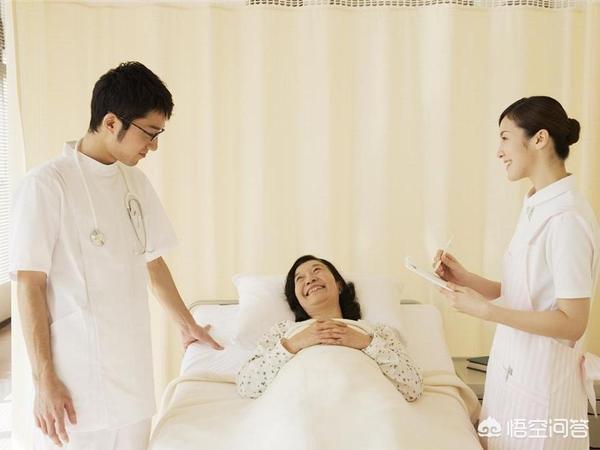
2. Physical therapy
Lumbar hot compresses, traction, infrared rays, microwave and other treatment means are effective for non-acute lumbar disc herniation caused by back and leg pain, numbness and other conditions, you can choose the right physical therapy methods. Regarding the lumbar massage treatment of lumbar protrusion, it is necessary to do lumbar spine CT or MRI and other tests to make clear that there is no obvious lumbar spinal stenosis, under the guidance of professional physiotherapists.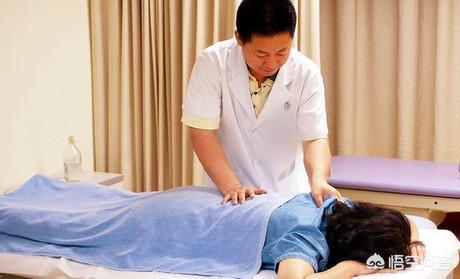
3. Drugs
For acute lumbar disc herniation caused by back and leg pain, numbness, medication can quickly eliminate the symptoms, reduce pain, for the clinic one of the commonly used means of treatment, can be divided into anti-inflammatory pain relief and nutrient nerves of the two major categories of drugs, if necessary, home use of hormones to relieve severe pain, the specific group of each doctor's prescription is different, generally 3-5 days the symptoms will be quickly relieved.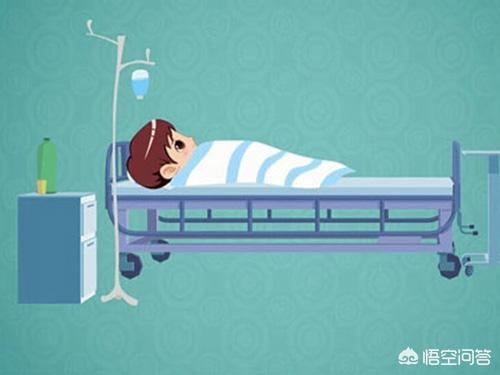
4. Surgery
They are mainly classified into minimally invasive surgery and open surgery. Regardless of the type of surgery, the purpose should be to relieve nerve root compression, stabilize the lumbar spine, and strive to return to work as soon as possible. Minimally invasive surgery is becoming more and more mature, but there is still a risk of recurrence. Classical open surgery is more traumatic and slower to recover, but the fixation and fusion is more accurate and the long-term effect is good.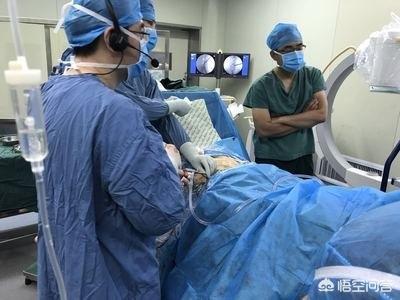
In most cases of lumbar disc herniation, there is unilateral leg pain or numbness, if the pain and numbness come together, it indicates more severe symptoms, you've had the disease for about 3 months, I don't know if you've had any treatment during that time, the method is never ordered by the doctor to suit each patient.
Too little information
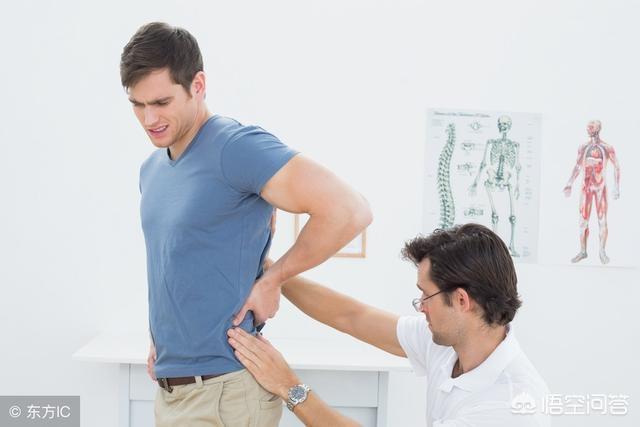
You directly ask about methods and medications, this way is not right, especially you just simply describe the herniated lumbar disc causing leg pain and numbness, which disc, and in which parts of the leg pain and numbness are now located? What condition aggravates or relieves it, this is to have to know.
diagnosis by palpation

Also, in patients with lumbar disc herniation, it is important to perform manual palpation, for example, pressing in the lower back to see if there will be radiating pain consistent with the symptoms, and the diagnosis can only be confirmed if the excitation point is found and there is a corresponding disc herniation on a CT or nuclear magnetic resonance (NMR).
After the diagnosis of lumbar disc herniation, the buttocks should also be palpated to see if there are any pressing pain points and radiating pain points, and if there are, they must be lifted synchronously, or else the symptoms will only recover partially, and long-term pain will lead to pressing pain in the painful parts of the legs as well, which should also be eliminated by manipulation.
analysis method
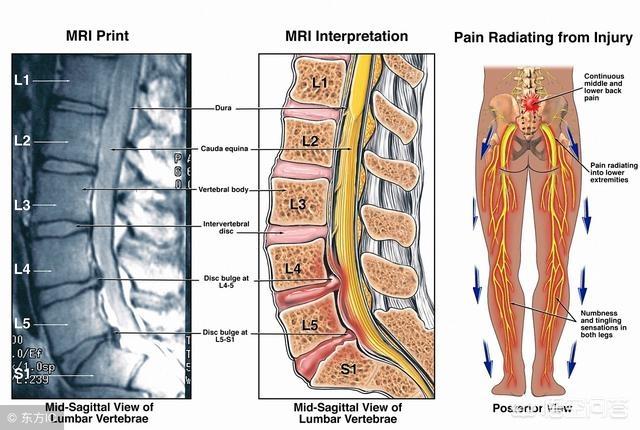
Simply put, if the pain and numbness is on the lateral side of the leg, we should look for L4-5 disc herniation and gluteus medius syndrome; if the pain and numbness is on the posterior side of the leg, we should look for L5-S1 disc herniation and pectus excavatum syndrome. This is a more conventional way of judgment, but does not exclude the possibility of mixed appearances.
concluding remarks
Do not listen to people who tell you exactly how to treat you when you provide so little information, such people are either not doctors or are not rigorous, if you are interested in any doctor's program, it is best to go to him in person to get a diagnosis, and then cooperate with the treatment after communicating with him and feeling credible.
When I had a herniated disc in 2011, I didn't sleep for three days and three nights because of the pain, and when I went to the hospital for fluoroscopy of my back and legs, I couldn't stretch my legs at all. At that time, I used a lot of methods of treatment, acupuncture, massage, cupping, hot compresses with ginger, etc. I lay on an electric mattress all day, and it took nearly two months of treatment to get well.
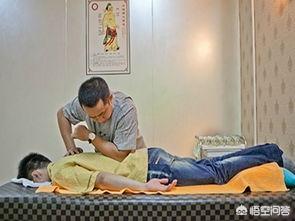
Then I had a few more episodes, also with back pain that made me unable to straighten up, and I realized that every time I had an episode it was in the winter, and I thought that the disease might have something to do with the cold, so when I had the episodes later on, even though the house was very hot with heaters, I would lie down on an electric mattress, with my whole body in a very hot environment, and lie down most of the day, and I would get well after four or five days in this way.
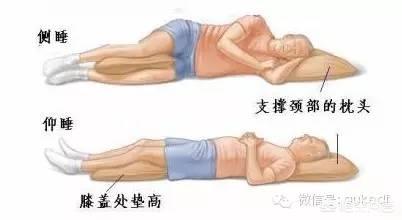
You may want to use this method by lying down in a hot place and predominantly lying down every day, which will slowly stop the pain.
Thank you! Generally this situation is the need for timely surgical treatment, of course, there are many people afraid of surgery, you can also be traction massage physiotherapy treatment, but if indeed there is still no efficacy, this need for surgical treatment.
Here it is essential to clarify the exact principle. Herniated lumbar discs lead to numbness or pain in the legs, this situation is mainly the herniated lumbar intervertebral discs compression of the nerve root, and this nerve root is just in charge of this area of numbness, weakness and pain and some other situations. So it will form a variety of clinical symptoms.
In clinical practice, many people will develop this symptom, generally can take oral medication to deal with the symptoms, this is applicable to relatively mild patients. Occasionally, pain and numbness occur, but not particularly serious.
If there is a tendency of aggravation or recurrence at a later stage, then it is even more important to take further measures at this time, such as massage and acupressure, physiotherapy and traction and so on in this way, the main thing is to take certain external means to retract the protruding lumbar discs inwardly, and may even be able to cure it, so as to reduce the compression of the nerve root.
If the above methods are still ineffective, then surgery is needed. The basic principle of surgery is to remove the herniated lumbar disc by using certain instruments to enter the inner part of the lumbar spine, so as to minimize the pressure on the nerve roots, and sometimes also to make certain repairs appropriately.
Of course, there are certain risks associated with surgery, such as ineffectiveness after surgery, infection after surgery, nerve root damage, and various other conditions, so surgery can only be performed if there are indications for surgery. Not everyone is suitable for surgery.
And there are many conditions that can now be treated in a minimally invasive way, but this one has to be evaluated more rigorously to see if it's a good candidate for surgery or not.
Another important thing is to change the previous bad habits, lumbar disc herniation, many people are because of the habit is a kind of wrong life habits and lead to.
Take the most typical example of bending over, there are a lot of people bending over in an incorrect posture, especially bending over to carry heavy objects, it is easy to make the lumbar intervertebral disc herniation and thus cause more serious injuries, and this is really not uncommon in the clinic. Therefore, many people even after the later stage of the relevant surgical treatment, must pay attention to change their bad habits, otherwise it is very likely to recur again as well as the emergence of some other progress.
So after understanding this one is able to understand exactly what kind of state I am in and what kind of steps I need to take.
I hope everyone is in good health!
Lumbar protrusion plus unilateral leg numbness and other diseases prevention and treatment methods recommended: 1, every day to eat the structure of wolfberry half a two (chewing). 2, as soon as possible to dredge the meridians: every morning and evening, once a day with the heart of the heart Laogong point beat feet Yongquan point. The first day to shoot one hundred, the second day to shoot two hundred b, the third day after the shoot three hundred to nine hundred. 3, non-sleeping time to meditate on the word "Buddha" and other single words, and the Buddhist daily chanting of the Buddha's name activities similar. Keeping the mind active, controlling the body posture, making good movements, etc., so that the body and mind are evenly balanced to maintain the balance of all aspects of the body. 4, sleep on a hard board bed and use a small child's spliced crawling mat with the reverse side facing up as a mattress and pillow, sleep on the side and turn the head towards the weaker half of the body. 5, take the side with the light leg pain to carry the main body weight. See the book "Mechanical Therapy" for more details.
Yes, a herniated lumbar disc does give symptoms of pain and numbness in the legs, in addition to which the strength of the lower limbs may be affected, resulting in lameness; low back pain is also a symptom, which can flare up during prolonged standing and sitting, and in severe cases, bed rest is required.
The lumbar region is a major support point for the body's movementIf there is a problem with the waist, it will lead to many complications, so we must pay attention to the protection of the waist on a daily basis. For example, the most common life stilt legs, bending over to carry heavy objects, long-term sleeping posture is not correct, long time wearing high heels, wrong posture to take heavy objects and sports, are very easy to let the waist receive damage.
Here's a little bit of my insight into the treatment of herniated discs.Conservative treatment is the first and preferred choiceBecause a herniated lumbar disc is not a problem that can be easily solved by medication and surgical treatment, and since it is not a disease that can be cured quickly and may recur, weBe sure not to be in a hurry!We can't eat hot tofu in a hurry.Depending on your situation and condition, and then go on to decide on a treatment.
If the pain is tolerable, you can try a few conservative treatments first and observe how effective the conservative treatments are, if you can get some relief, that would be the best! However, if it has no effect or aggravates the condition, then you need to stop it in time and treat it in a different way;If the pain is unbearable.If you need to take painkillers, or if you can't walk on the ground, which affects your life and work, you should take immediate measures in time and consider going to a regular orthopedic hospital to take surgical laminectomy decompression and internal fixation treatment.
A few tips for conservative treatment are shared:
Diet.Eat nutritious food, take medication to promote nerve recovery, such as non-steroidal anti-inflammatory drugs (NSAIDs), as prescribed by your doctor; keep the affected area warm by applying hot compresses to avoid getting cold; use your lower back appropriately and correctly to reduce the pressure on the affected area;
dailyIn addition, pay attention to rest and ensure sufficient sleep time; choose a mattress with moderate hardness; during the day, you can wear a waist cushion to protect the lumbar vertebrae, maintain a correct posture, and do not stand and sit for a long time to avoid aggravating the condition;
Chinese medicineIn addition to orthopedic manipulative massage, herbal hot compresses, acupuncture and physiotherapy, and small needle knife, you can also use massage, acupuncture, cupping, physiotherapy, and baking electricity in the lower back and painful lower limbs, and your doctor will develop a treatment plan for each step of the process according to your condition and your own recovery situation;
Follow An Lian Sheng Chinese Medicine to learn more about Chinese Orthopedics.
Herniated disc incidence is increasingly high, and is young, part of the herniated patients do not have too many symptoms, which is more fortunate, but also some of the patients pain is difficult, need treatment. At present, the treatment of hand break more, but the author does not recommend that you operate, so the risk is greater, but also not 100% success, the most safe and effective method is the use of external medicine.
This is a chronic disease, can not expect a few days can be adjusted, each patient external medicine absorption degree is not the same, photonic liquid moxibustion has a very good effect, the key is easy to use simple, and no side effects, the efficiency of 100 percent.
This question and answer are from the site users, does not represent the position of the site, such as infringement, please contact the administrator to delete.